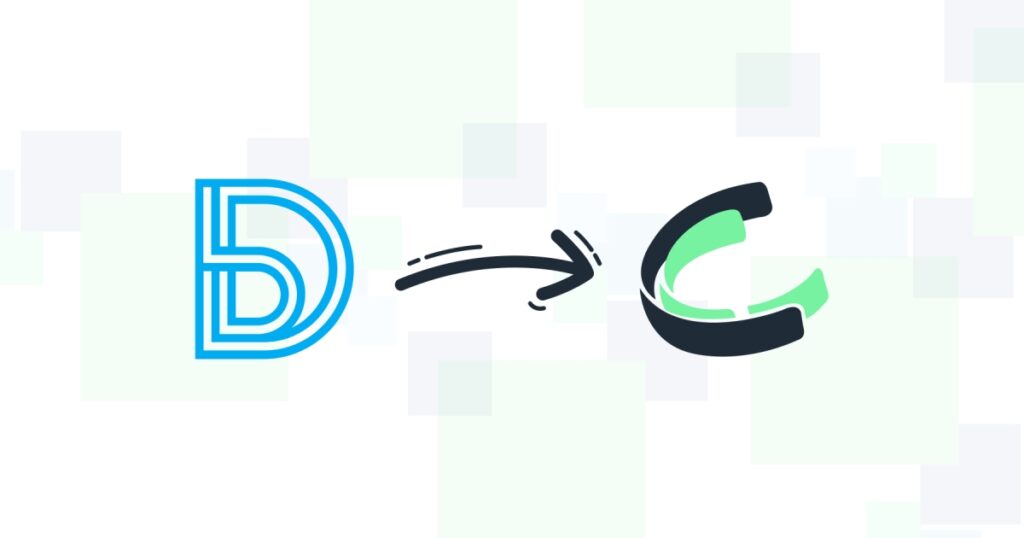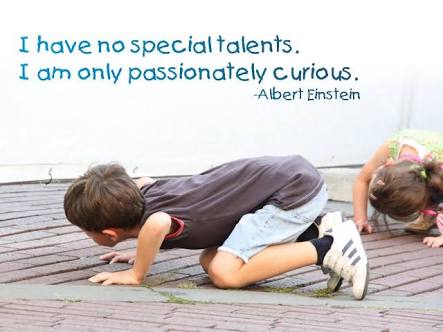If it’s widely accepted that a brand is people’s perception of a company, person, or product, then a company, person, or product can decide to change that perception.
That is precisely the challenge I took on at the beginning of 2024 when I was tasked with leading the rebrand of bendada.com.
The idea of a rebrand wasn’t new. As someone who had followed the brand for years, even from the outside, I had thought about its limitations. What Ben had done was fantastic, growing a personal blog into a widely known tech publication that competed with bigger names in the space with institutional backing. But the name came with the constraint of having to explain that the publication (not blog) had grown beyond just him.
As I began, my intuition, as someone now close to the brand, confirmed what I had sensed from an outsider’s perspective: a change was necessary.
The first thing I focused on was understanding the existing perception. I quickly noticed the constraints that the name bendada.com imposed on the publication, especially in interactions with partners, vendors, and clients.
I remember walking into meetings where people would casually refer to the company as “him,” assuming it was a one-man show. They were often surprised to learn there was an entire team of ten people behind the work they admired. Despite the growth and visibility we’d achieved, far too many still thought it was just one person. To be fair, many already knew there was a team, but even more didn’t.
That was the narrative we set out to change. Our goal was to free it from those constraints and breathe new life into a brand that had been in existence for five years. We needed to evolve the perception from a person’s name to a company’s identity.
Starting with the brand’s purpose
Before the change of name and logo, the rebrand was fundamentally about redefining and reinforcing the publication’s role in the African tech ecosystem. The space has a lot of publications, and a question I always ask is: “If the stories on your website are no different from those on another publication, why should anyone visit your site?”
We had to be realistic about our answer.
This opportunity was a good time to rethink what it means to be a tech publication and how to communicate this unique value to the world best. I understood it was impossible to do the external rebrand without first doing the internal work.
I have a good background in branding. While I had never led a full rebrand from scratch before, I am a dedicated student of design and brand strategy. I drew heavily on the work of brand experts like Brendette Jiwa, Debbie Millman, and Chris Do, whose content enlightened my approach to this process. I had watched workshops and studied frameworks, and I knew we had to start with our “who.”
I began with an audience definition to clearly define who we were serving. This ranged from students just learning about the industry and tech professionals building their careers, to executives and investors making high-stakes decisions. This exercise helped me realise that our unique value lies in doubling down on what the publication was already known for: quality, well-researched stories.
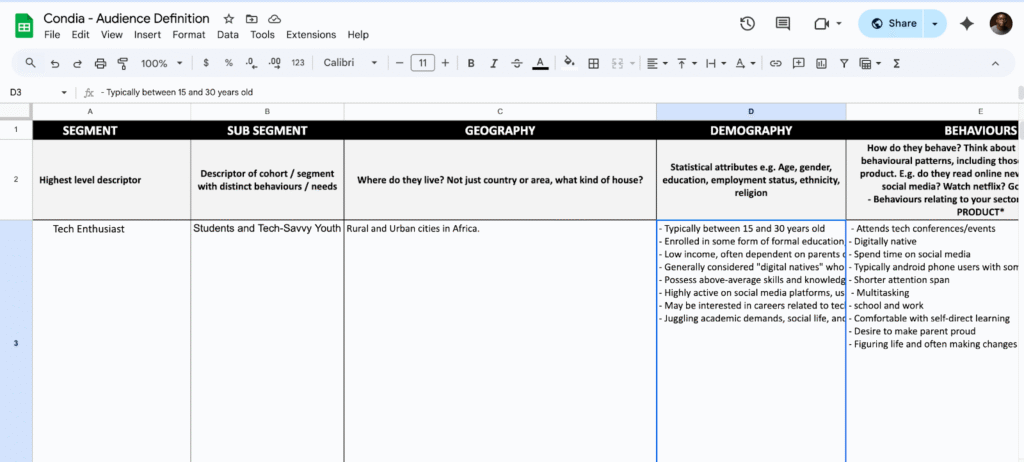
While it was tempting to entertain fancy ideas about focusing on a single niche sector, it just didn’t seem practical. The publication is a moving vehicle, not a museum.
Existing business realities – it is an advertising-driven publication – didn’t allow for that, in my opinion. Advertisers care about reach, and that is determined by the type of content you produce. Hyper-niche stories, while valuable, often don’t generate the broad audience numbers needed to sustain the business on their own.
This creates a tension. You need deep, insightful content that requires significant time and access to information, but you also need to serve the advertising-driven business model. As much as it was tempting to reinvent ourselves completely, we knew that “Tech in Africa” was still our core. So, for each audience type we identified, we mapped out how to meet their specific needs—for example, providing students with practical “how-to” guides—all while staying true to our central mission.
All of this foundational work anchored our new direction firmly in the needs of our audience. It saved us from the temptation of creating something “new” or “out-of-the-box” just for the sake of it. No matter what creative idea we had, we always brought it back to the audience. I believe this is one of the most helpful things you can do when building a brand. When questions or challenges inevitably arise, your anchor is your audience. The answer is always, “This is what our users need.”
I also understood that in the media space, people have a wide range of needs: they want to be educated, inspired, moved, and kept abreast of what’s happening. But to serve them effectively, we had to narrow our focus.
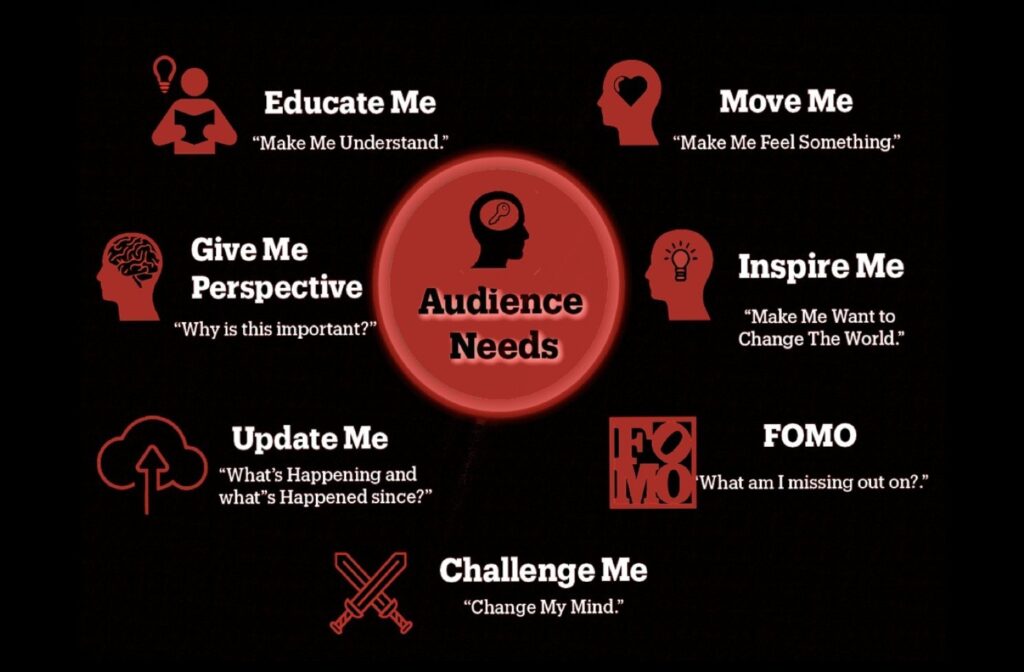
After initially drawing up a wide map of nearly seven different audience types, I realised we needed to niche down. We couldn’t be everything to everyone. We decided our core audience consisted of three key pillars: employees (the operators in tech), founders, and investors. We dug deep into the questions they needed answers to, the resources they lacked, and the ways we could serve them better.
We settled on a core mission: to provide ambitious founders, operators, and investors with actionable insights.
This focus extended to our coverage sectors. While the African tech scene is broad, we saw that some sectors had more activity. More activity means more movement, more news, and more responsive sources—making it easier to gain information. We also looked at the business side to see which sectors were driving the most traffic and potential revenue.
This led us to prioritise key areas including Fintech, Logistics & Mobility, and Deep Tech (AI).
This wasn’t to say these are the only topics we would cover. Rather, it was a strategy of prioritisation. Focus is a powerful tool; it helps you stand out when everyone else is looking in a different direction. In a nascent space, some sectors can go quiet for long periods. If you claim to focus only on one niche that suddenly loses momentum, your publication suffers. As a growing company that needs to be pragmatic, we couldn’t afford that.
This entire process gave us comfort and a clear internal direction. We knew who we wanted to serve and where we wanted to go. But all of this was the fundamental work behind the scenes. The next challenge was translating it to the public.
Who were we now going to be to them?
The Search for a Name
With our internal strategy set, it was time to give it a name. I was determined to break away from industry trends. Historically, publications adopted names reflecting their era: ‘Times’ or ‘Daily’ for newspapers and more recently, a sea of brands with ‘Tech’ in their name. I felt that in 2024, a publication’s name didn’t need to be so literal.
My guiding principle was simple: could this name work if we decided to start doing something different tomorrow? A brand name shouldn’t be a cage; it should be a platform. We needed a name that could evolve with the publication, whatever it might become.
The search was gruelling. My browser history was dominated by endless domain searches, a frustrating process of finding a great name only to discover it was already taken. Then, one evening, the core of what we were trying to do crystallised into a single phrase: a convergence of ideas. I combined ‘Con’ with the last three letters of ‘media’, and there it was: Condia. I rushed to check the domain at 7 p.m., and to my relief, it was available.
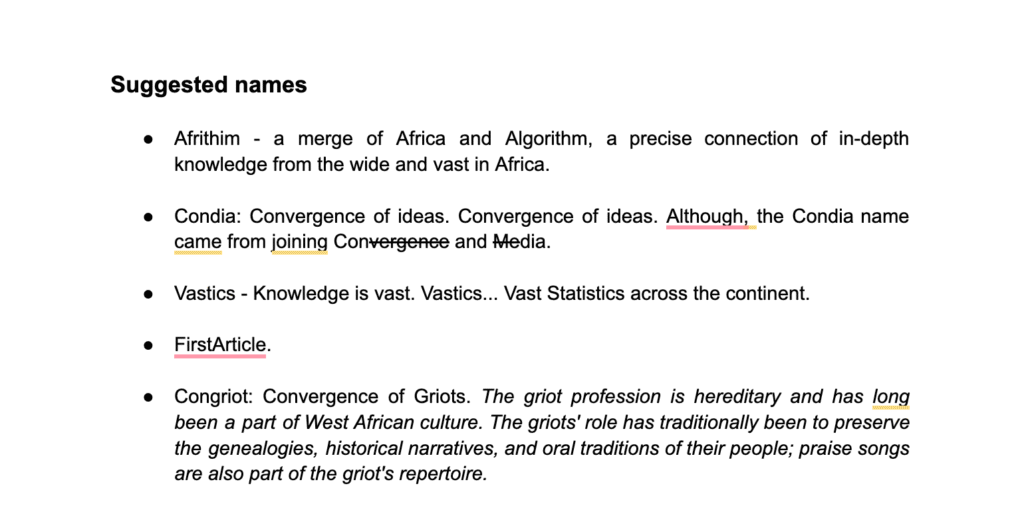
As a team, the floor was open to suggestions, and every week, some suggestions came in till nothing came in again.
I added this suggestion to with team, it was received with mixed feelings. Someone on the team still felt FirstArticle was a better 😂
I then included it in a shortlist of three options and shared it with various people. A good number of people chose ‘Condia’.
Of course, there was some pushback from some people. But my response was always the same: “If you can find a better name, I am happy to drop this one.”
I knew a name grows on you. bendada.com didn’t scream “tech” when it started, but it built a powerful brand. No one came back with a better alternative (yet).
Even after we settled on it, I kept testing it. At events, I would casually mention to people (readers/partners), “We’re rebranding to Condia, what do you think?”
I probably asked 20 to 30 people. I never got a “this is horrible.” Some said it would take a while to sink in, but no one had a viscerally negative reaction. This gave me the confidence that we weren’t just going with something because I loved it; it had legs.
Crafting the Visual Identity
With the name secured, we moved on to the visual identity. I’m familiar with colour psychology, and while I wanted to abide by design principles, I also wanted to stand out. Our competitors prominently used red and blue, so those were kinda off the table.
My instruction to our in-house designer, Kenny Akinsola, was to think differently. The initial iterations were a bit shiny and noisy. Eventually, we settled on teal. For the logo, the icon was the letter C revolving, giving off the idea of the different moving parts (ideas) converging.
That became our direction. Throughout the design process, I had a crucial sounding board in Dumebi Iwuchukwu, a former colleague who leads design at Stears, whom I would bounce ideas off of.
Folks like Binjo Adeniran, Victor Ekwealor, Douglas Kendyson and many more people I can’t recall were very instrumental as sounding boards.
Migrating Platforms
This rebrand involved changing the digital infrastructure that powers the publication. From the beginning, I was keen on moving from Ghost to WordPress.
My central argument for WordPress was simple: ownership. Using Ghost was like renting a house; using WordPress is like owning it. You have full control, you can build what you want, and you can take it with you wherever you go.
After getting the green light, we brought on Omeiza, a former colleague, to design and build the new site. We initially brainstormed a million-and-one features, but had to be disciplined and narrow our scope to the absolute fundamentals for version 1.0. He did a good job bringing the vision to life, though, as with most products, we had a few bugs to sort out afterwards.
We also underestimated the transition from Ghost to WordPress. It was incredibly stressful, primarily because of one major task: exporting years’ worth of articles. Online forums and guides spoke about a straightforward process, but the reality is that the exports weren’t smooth. The formatting broke, and images got lost.
We ended up having to later hire several contractors just to help us move and painstakingly reformat every article. This took place for 3-4 months after the rebrand went live.
It was a stark reminder that technical migrations are always more complex than they seem.
Announcing Condia to the World
For the go-live, we operated on a lean budget. This meant we had to be resourceful. I sought advice from peers who had navigated similar waters, speaking with Rahaman Abiola, Editor-in-Chief at Legit.ng, who was incredibly helpful in explaining their process for a past domain change. Their situation was slightly different—a domain name change on the same WordPress platform, which didn’t involve the complexities of migrating articles on the same scale. Still, their insights were invaluable.
Our launch strategy was a phased transition. We put out information ahead of time, letting our audience know a change was coming. Then, for the first month after launch, we kept the old bendada.com site live but added a prominent pop-up that directed visitors to the new Condia domain. This gave our readers time to adjust and ensured a smooth handover.
One of the biggest fears I had to manage, both internally and externally, was the potential impact on our traffic and SEO. There were concerns on the team that we’d lose our audience.
We put a permanent (301) redirect in place to minimise this. I’ll explain, changing a domain isn’t like changing your house address and hoping people find you. It’s like moving, but anyone who shows up at your old address is instantly and automatically transported to your new one. That’s what a permanent (301) redirect does. Every link to bendada.com was automatically forwarded to its new home on condia.com.
Post-launch, our immediate focus was on maintaining traffic and meticulously fixing the inevitable broken backlinks.
Of course, communication is never perfect. In the weeks that followed, I would still get messages saying, “Oh, I didn’t know you moved!” It’s a reminder that at some point, you just have to complete the transition and push forward, trusting that your audience will follow.
Aftermath
Depending on who you ask, the launch was a success or meh (merely okay).
For me, the most important thing was that the new brand was well-accepted, and we didn’t face any significant public backlash, which validated all the upfront work we did gathering feedback and testing the name.
People told us, “It’s about time,” confirming our initial instinct. We were able to pull off something of this scale for a fraction of what it might typically cost, not because we were trying to be “penny-wise, pound-foolish,” but because we were resourceful and leveraged our internal capabilities.
One of the most important things I emphasised before, during, and after the process was that a brand is not just a change in name, colour, and logo. It’s a promise of a new experience.
The real change is in the types of stories you tell and the activities you pursue. That was something I was very big on—people should feel that Condia is different because the content on the site is different. That is the harder part of branding, and it’s an ongoing battle the team will keep fighting. The publication isn’t just different because we say so; it’s different because our stories are different. The goal is for a reader to wonder, “What new, insightful thing is on Condia today?”
This entire experience strengthened my belief in the brand principles I’ve learned over the years. It also gave me a profound new respect for brand strategists. It is an immense amount of heavy lifting—the deep thinking, the constant feedback loops, the work of explaining the vision repeatedly to get everyone on the same page.
